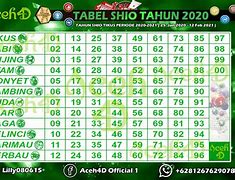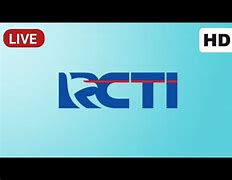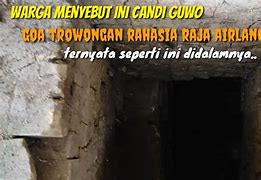
Between The Legs Dribble Dapat Digunakan Untuk Melewati Lawan Karena
Why is between the legs dribble generally effective
Between the legs dribble is generally effective because it could be used to diminish the effectiveness of on-ball defense, particularly as it relates to footwork and/or hand movement within a proper defensive stance.
Essentially, one of the first fundamental concepts within on-ball defense as well as basketball defense is the defensive stance.
Basically, a defender’s proper defensive stance would be comprised of feet that are slightly wider than shoulder width apart, bent knees, and a straightened back while remaining on balance.
Additionally, a defender should not be flat-footed and a defender should also have hands up and arms extended away from the sides of the body.
Furthermore, a defender should use one of their hands to mirror the ball as well as contest a jump shot if necessary.
Nevertheless, between the legs dribble action, especially alongside supplementary dribble moves, could break down the elements of the defensive stance.
That could result in footwork that is ineffective due to offensive misdirection, which could then lead to dribble penetration and/or inactive hand movement, which could conclude with uncontested/semi-contested offensive jump shots.
As a basic example, let’s say that an offensive player is dribbling the ball with their right hand near the right side wing and that same player is currently being covered by an on-ball defender.
From that point, the offensive player could quickly execute a right hand to left hand between the legs dribble move.
When that occurs, it could influence the on-ball defender to slide their feet towards the left from the perspective of the offensive player in possession of the ball.
Immediately after that though, the offensive player could quickly execute another dribble move such as a left hand to right hand standard crossover dribble or behind the back dribble in the opposite direction.
This essentially results in ineffective defensive footwork, which leads to offensive dribble penetration towards the baseline, for this instance.
Following that, the offensive player could take a mid-range jump shot (that would be either uncontested or semi-contested) or simply dribble to the basket and score via a layup or dunk.
Which basketball positions typically use between the legs dribble
Between the legs dribble is typically used by perimeter-oriented basketball positions such as the point guard, shooting guard, or small forward.
However, it is usually not an issue for post-oriented players such as the power forward or center to perform between the legs dribble if those players understand the basic fundamentals of dribbling and therefore have the knowledge to perform that action, similar to the perimeter players.
What is between the legs dribble in basketball
Between the legs dribble consists of action that occurs when an offensive player dribbles the basketball with one particular hand between their legs and afterwards, that same player catches the ball with their opposite hand.
Also, between the legs dribble is an indirectly-related type of crossover dribble and one of several dribble moves that could be utilized to create scoring or playmaking opportunities near the basket or near the perimeter areas of the court.
In addition to that, there are two primary variations of between the legs dribble action.
In the first variation, which is also the standard form, an offensive player dribbles the ball between their legs with one particular hand as it is in front of them, and afterwards, that same player catches the ball once it is near the leg that is opposite the initial dribbling hand.
In the second variation, which is generally referred to as the reverse between the legs dribble, an offensive player dribbles the ball between their legs with one particular hand as it is behind them, and afterwards, that same player catches the ball once it is near the leg that is opposite the initial dribbling hand.
It is also possible for an offensive player to dribble the ball between the legs while remaining stationary or while moving on the court.
Between the legs scissors
This is a more advanced version of the stationary warm-up drill. This time, players will move both feet back and forth but will remain in the same spot.
To begin, stand up with feet about shoulder width apart while holding the basketball. Next, move the left foot about a step ahead of the right foot.
In other words, the left foot would be leading the right foot. Following that, bend the knees while keeping the back straight.
Afterwards, dribble the ball with the right hand between the legs and catch it with the left hand while it is behind the body near the left leg.
From there, as the ball is in the left hand, quickly switch the position of the feet so that the right foot is now leading the left foot but continue to remain in the same spot. Put another way, the feet can move but the whole body should not.
As that is happening, dribble the ball with the left hand between the legs and catch it with the right hand while it is behind the body near the right leg.
Continue to do this with both hands while switching the position of the feet for a certain amount of time or repetitions to complete the between the legs scissors drill.
Related: Scissors Dribble Drill – YouTube
What is a potential limitation of between the legs dribble
A potential limitation of between the legs dribble action is that it is typically not highly effective against very aggressive on-ball pressure.
This is even more imperative when the player in possession of the ball is being guarded by a lockdown defender that has the capability to take away driving angles, especially by using their speed, quickness, and overall defensive basketball IQ.
Basically, an offensive player usually needs a certain amount of space between themselves and the on-ball defender so that it would be feasible to dribble the ball between the legs altogether.
Unfortunately, aggressive defensive pressure makes it difficult to efficiently accomplish that objective.
Therefore, the offensive player in possession of the ball should consider utilizing a different type of dribble move. In particular, behind the back dribble action is usually a good move to counter against on-ball defensive pressure.
Moreover, if it is practical to do so, an offensive player could consider using the escape dribble as alternative dribble action to break away from an on-ball defender and simultaneously alleviate defensive pressure.
What are examples of between the legs basketball drills
These are examples of basketball drills that could possibly help players practice and develop between the legs dribble action.
These drills are primarily designed for beginners such as youth basketball players but they can also be used by more advanced players as well.
Additionally, these drills are mainly for individuals who would practice by themselves. However, the drills could also be implemented into team practices as well.
Furthermore, when executing the drills in general, players should try to keep their head up and eyes forward as much as possible. In other words, players should try to avoid looking down at the basketball whenever possible.
This is a simple warm-up drill designed to aid wrist action and finger pad control. To begin, stand up with feet about shoulder width apart while holding the basketball.
Next, move the left foot about a step ahead of the right foot. Following that, bend the knees while keeping the back straight.
Afterwards, dribble the ball with the right hand between the legs and catch it with the left hand while it is behind the body and near the left leg.
It should also be stated that the ball in the left hand should not sit directly on top of the palm as that would signify the end of the dribble. From that point, a violation would occur if the ball were to be dribbled again.
Once the ball is in the left hand, quickly execute a reverse between the legs by dribbling it with the left hand from the back side and between the legs again. After that, catch the ball with the right hand to complete the first part of the warm-up.
As for the second part of the warm-up, the instructions are similar with a few minor changes.
Therefore, to start, stand up with feet about shoulder width apart while holding the basketball. Next, move the right foot about a step ahead of the left foot. Following that, bend the knees while keeping the back straight.
Afterwards, dribble the ball with the left hand between the legs and catch it with the right hand while it is behind the body near the right leg.
Once the ball is in the right hand, quickly execute a reverse between the legs by dribbling it with the right hand from the back side and between the legs again. After that, catch the ball with the left hand to complete the second part of the warm-up.
Continue to execute the first and second parts for a certain amount of time or repetitions to finish the stationary between the legs warm-up drill.
Baseline to half court
This drill could be considered an advanced version of the previous between the legs scissors drill. It involves moving while dribbling the ball from one baseline to the half court line.
Start near one baseline with feet about shoulder width apart while holding the basketball. Next, move the left foot about a step ahead of the right foot. Afterwards, bend the knees while keeping the back straight with head up and eyes forward.
Following that, dribble the ball with the right hand between the legs and catch it with the left hand. From there, as the ball is still in the left hand, quickly take a step forward with the right foot so that it leads the left foot.
Next, with the right foot ahead of the left foot, dribble the ball with the left hand between the legs and catch it with the right hand.
Afterwards, take a step forward with the left foot so that it is leading the right foot. Dribble the ball with the right hand between the legs and catch it with the left hand.
Continue this process dribbling with both hands and moving both feet forward towards the half court line.
This is a variation of the preceding drill. However, this time, the offensive player would start near one baseline and dribble the ball between the legs while moving towards the opposite baseline.
The player should also try to keep their head up and eyes forward while executing the drill.
Moreover, as the player continues to get better at the drill, they can try to reach the opposite baseline in a specified amount of time while moving and dribbling as quickly as possible.
The tennis ball between the legs drill primarily helps a player not look down at the ball while dribbling it and it is a great way to work on basketball conditioning as well.
To perform this drill, begin by holding a tennis ball in the right hand and a basketball in the left hand.
From that point, toss the tennis ball in the air with the right hand and then immediately dribble the ball between the legs with the left hand.
Next, catch the basketball with the right hand and at the same time, catch the tennis ball with the left hand.
Afterwards, toss the tennis ball in the air with the left hand and then immediately dribble the ball between the legs with the right hand.
Following that, catch the tennis ball while it is still in the air with the right hand and at the same time, catch the basketball with the left hand.
Execute this action over and over for a specific amount of time or reps to complete the tennis ball between the legs dribbling drill.
This article was co-authored by
. Ryan Tremblay is a Basketball Coach and the Owner of National Sports ID and STACK Basketball. With over 30 years of experience, Ryan specializes in basketball coaching, social media marketing, and website design. Ryan created the National Sports ID as a platform to verify the age/grade of youth athletes and STACK Basketball to inspire young athletes to grow into mature individuals and basketball players. Ryan was a First Team All-Decade basketball player in Bergen County and finished in the top 20 all-time leading scorers in the county’s history with 1,730 points. He went on to Caldwell University on a basketball scholarship where he was part of three championship teams. Ryan was a two-time All-Metropolitan, All-State, and All-Conference point guard and the all-time three-point leader in the school’s history, landing him in the Caldwell University Athletic Hall of Fame. This article has been viewed 249,904 times.
Updated: April 25, 2024
Dribbling a basketball between your legs is a great trick to help keep the ball out of the defender’s grasp. Start by getting in basic dribbling stance with your knees slightly bent and your head and chest pointed straight ahead. Use the pads of your fingers on your dominant hand to bounce the ball in front of you at knee height. Take a diagonal step forward with your opposite foot. As you’re doing this, shift your hand to the side of the ball as it bounces, so only your thumb is on top of the ball. Then, use your hand to push the ball between your open legs, so it bounces underneath you and comes up behind you. Move your opposite hand behind you to receive the ball as it emerges. To learn how to perfect a crossover, read on!
Thanks to all authors for creating a page that has been read 249,904 times.
Terjadi kesalahan. Tunggu sebentar dan coba lagi.
Addo, O.Y., Stein, A.D., Fall, C.H., Gigante, D.P., Guntupalli, A.M., Horta, B.L. & Martorel, R. (2013). Maternal height and child growth patterns. The Journal of Pediatrics, 163, 549-554.
Andarwati, D. (2007). Faktor-faktor yang berhubungan dengan status gizi balita pada keluarga petani di desa Purwojati kecamatan Kertek kabupaten Wonosobo. (Tesis). Fakultas Ilmu Keolahragaan, Universitas Negeri Semarang. Semarang, Indonesia.
Anugraheni, H.S., & Kartasurya, M.I. (2012). Faktor risiko kejadian stunting pada anak usia 12-36 bulan di kecamatan Pati, kabupaten Pati. Journal of Nutrition College, 1(1), 30-37.
Atmarita & Falah, TS. (2004). Analisis Situasi Gizi dan Kesehatan Masyarakat. Dalam Soekirman et al. (Eds.), Ketahanan Pangan dan Gizi di Era Otonomi Daerahdan Globalisasi. Prosiding Widya Karya Nasional Pangan dan Gizi, 8, 129-161.
Dinkes Kota Bengkulu. (2014). Pemantauan Penilaian Status Gizi Balita Berdasarkan TB/U Kota Bengkulu Tahun 2013. Kota Bengkulu: Dinkes Kota Bengkulu.
Fernald, L.C. & Neufeld, L.M. (2007). Overweight with concurrent stunting in very young children from Rural Mexico: prevalence and associated factors. European Journal of Clinical Nutrition, 61(5), 623-632.
Henningham, H.B. & Mc Gregor, S.G. (2009). Gizi kesehatan masyarakat, gizi dan perkembangan anak. Jakarta: Penerbit Buku Kedokteran EGC. Terjemahan Public Health Nutrition, Editor. Gibney, M.J, Margetts, B.M, Kearney, J.M & Arab, L. Blackwell Publishing Ltd, Oxford.
Kemenkes RI. (2013). Riset kesehatan dasar (RISKESDAS) 2013. Jakarta: Badan Penelitian dan Pengembangan Kesehatan Kemenkes RI.
Lestari, W., Margawati, A., & Rahfiludin, Z. (2014). Faktor risiko stunting pada anak umur 6-24 bulan di kecamatan Penanggalan kota Subussalam Provinsi Aceh. Jurnal Gizi Indonesia, 3(1), 37-45.
Mahgoub, S.E.O., Nnyepi, M., & Mahgoup, T.B. (2006). Factor affecting prevalence of malnutrition among children under three years old age in Botswana. African Journal of Food, Agriculture, Nutrition and Development, 6 (1), 1-15.
Manary, M.J., & Solomons, N.W. (2009). Gizi kesehatan masyarakat, gizi dan perkembangan anak. Jakarta: Penerbit Buku Kedokteran EGC. Terjemahan Public Health Nutrition, Editor. Gibney, M.J, Margetts, B.M, Kearney, J.M & Arab, L. Blackwell Publishing Ltd, Oxford.
Martorell, R., & Zongrone A. (2012). Intergenerational influences on child growth and undernutrition. Paediatric Perinatal Epidemiology, 26 (Suppl 1), 302-314.
Munthofiah, S. (2008). Hubungan antara pengetahuan, sikap, dan perilaku ibu dengan status gizi anak balita. (Thesis). Program Studi Kedokteran Keluarga Universitas Sebelas Maret. Surakarta, Indonesia.
Nadiyah, Briawan, D., & Martianto, D. (2014). Faktor risiko stunting pada anak usia 0-23 bulan di Provinsi Bali, Jawa Barat, dan Nusa Tenggara Timur. Jurnal Gizi dan Pangan, 9 (2), 125-132.
Nasikhah, R. & Margawati, A. (2012). Faktor risiko kejadian stunting pada balita usia 24-36 bulan di kecamatan Semarang Timur. Journal of Nutrition College, 1(1), 76-184.
Onis, M.D., & Blossner, M. (1997). WHO global data base on child growth and malnutrition. Geneva, Switzerland: WHO.
Purwandini, K., & Kartasurya, M.I. (2013). Pengaruh pemberian mikronutrient sprinkle terhadap perkembangan motorik anak stunting usia 12-36 bulan. Journal of Nutrition College, 2 (1), 50-59.
Rahayu, A.& Khairiyati, L. (2014). Risiko pendidikan ibu terhadap kejadian stunting pada anak 6-23 bulan. Jurnal Penelitian Gizi dan Makanan, 37 (1), 129-136.
Ramli, Agho, K.E., Inder, K.J., Bowe, S.J, Jacobs, J., & Dibley, M.J. (2009). Prevalence and risk factors for stunting and severe stunting among under-fives in North Maluku Province of Indonesia. BMC Pediatrics, 9, 64-73.
Ruel, M.T. (2008). Addressing the underlying determinants of undernutrition: Examples of successful integration of nutrition in poverty-reduction and agriculture strategies, 21-29. In SCN News No.36.
Schmidt, M.K., Muslimatun, S., West, C.E., Schultink, W, Gross, R., & Hautvast, J.G.A.J. (2002). Nutritional status and linear growth of Indonesian infants in West Java are determined more by prenatal environment than by postnatal factors. The Jour¬nal of Nutrition. 132 (8), 2202-2207.
Semba, R.D., de Pee S., Sun, K., Sari, M., Akhter, N., & Bloem, M.W. (2008). Effect of parental formal education on risk of child stunting in Indonesia and Bangladesh: A cross-sectional study. The Lancet, 371, 322–328.
Ulfani, D.H., Martianto, D., & Baliwati, Y.F. (2011). Faktor-faktor sosial ekonomi dan kesehatan masyarakat kaitannya dengan masalah gizi underwight, stunted, dan wasted di Indonesia: Pendekatan ekologi gizi. Jurnal Gizi dan Pangan, 6 (1), 59-65.
UNICEF. (1990). Strategy for improved nutrition of children and women in developing countries. policy review paper E/ICEF/1990/1.6, UNICEF: New York.
UNSCN. (2008). 6th Report on the world nutrition situation: Progress in nutrition. Geneva, Switzerland: UNSCN.
WHO. (2016). Growth reference 5-19 years. Geneva, Switzerland: WHO. Retrieved from https://www.who.int/growthref/tools/en/
WHO. (2011). World health statistik 2011. Geneva: WHO.
WHO. (2010). Nutrition Landscape Information System (NLIS) Country Profile Indicators: Interpretation Guide. Geneva, Switzerland: WHO Press.
WHO. (1997). WHO Global Data Base on Child growth and Mal Nutrition. Geneva, Switzerland: WHO.
World Bank. (2006). Repositioning Nutrition as Central to Development. A Strategy for Large-Scale Action. Washington DC: World Bank.
Yuk, beri rating untuk berterima kasih pada penjawab soal!



